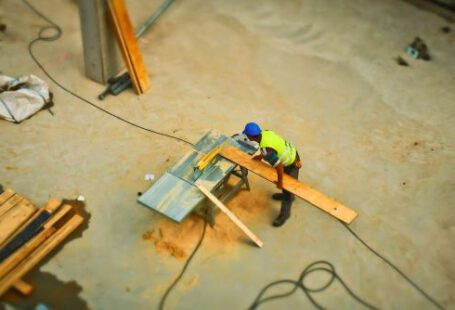The use of cranes is an ancient practice, but the technology of these heavy lifting machines has seen tremendous developments in recent years. As the industry continues to progress, the future of crane technology looks brighter than ever. In this article, we will explore the various technologies that are driving the advancement of crane technology, as well as how they are expected to shape the future of the industry.
Automation and Robotics
The introduction of automation and robotics to the crane industry has been a major contributor to the advancement of crane technology. Automation technology allows for the control of all crane operations, from the movement of the crane to its payload, to be automated, providing more safety and efficiency. Robotics is also being used to reduce the need for manual labor, which can be dangerous and time-consuming. Automation and robotics are expected to continue to be heavily integrated into crane operations in the future, allowing for even greater safety and efficiency.
Smart Technologies
Smart technologies are also being integrated into the operation of cranes, allowing for real-time monitoring of operations, as well as data-driven decision making. This allows for greater accuracy and safety in crane operations, as well as the ability to quickly respond to changing conditions. Smart technologies are expected to be heavily integrated into crane operations in the future, allowing for even greater precision and efficiency.
Artificial Intelligence
Artificial intelligence is another technology that is being used in crane operations, allowing for greater accuracy and safety in operations. AI-powered systems can be used to monitor and analyze data in real-time, allowing for the detection of potential issues before they become a problem. AI is also being used to automate certain operations, such as selecting the optimal route for a crane. As artificial intelligence continues to advance, its integration into crane operations is expected to become even more sophisticated in the future.
Cloud Computing
Cloud computing is also being used to improve the operation of cranes. Cloud-based systems allow for the sharing of data across multiple devices, allowing for real-time collaboration and decision-making. This can help reduce downtime and improve the efficiency of operations. Cloud computing is expected to continue to be heavily integrated into the operation of cranes in the future, allowing for even greater collaboration and efficiency.
Advanced Materials
Advanced materials are also being used in the construction of cranes, allowing for greater strength and durability. These materials allow for the construction of more efficient and reliable cranes, reducing maintenance costs and downtime. As advanced materials continue to be developed, they are expected to become more widely used in crane construction in the future, allowing for even greater safety and efficiency.
Conclusion
The future of crane technology looks brighter than ever, with a variety of technologies driving its advancement. Automation and robotics are being used to reduce the need for manual labor, while smart technologies and artificial intelligence are allowing for greater precision and safety. Cloud computing is allowing for real-time collaboration and decision-making, and advanced materials are allowing for more efficient and reliable cranes. As these technologies continue to develop, the future of crane technology looks brighter than ever.






